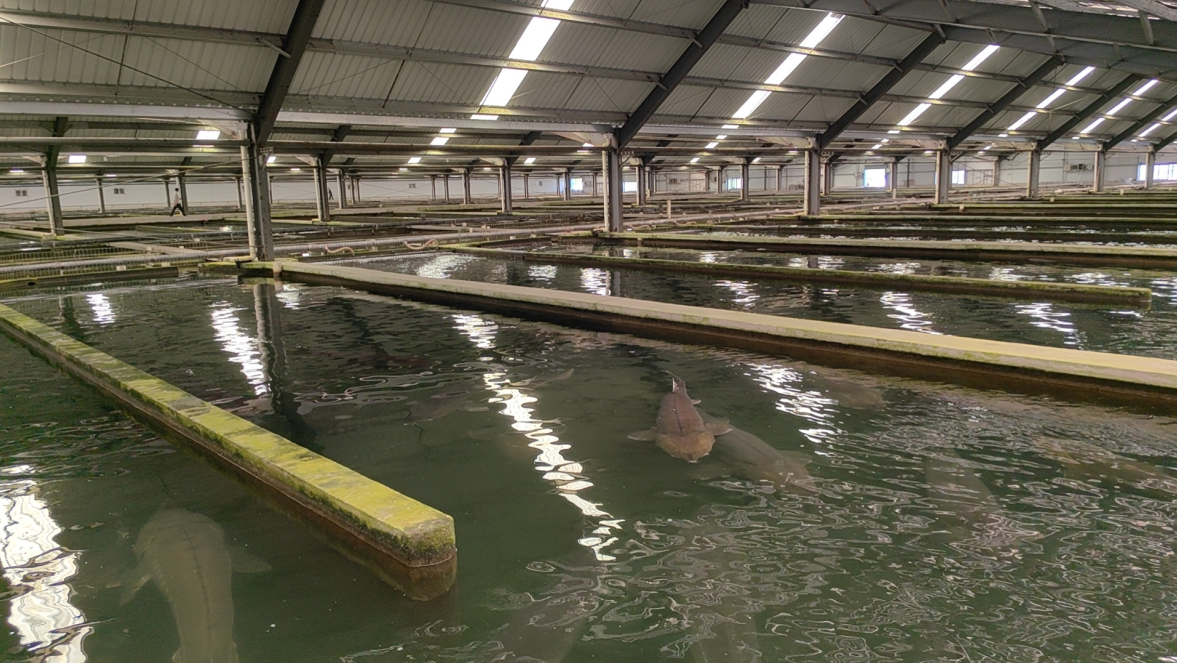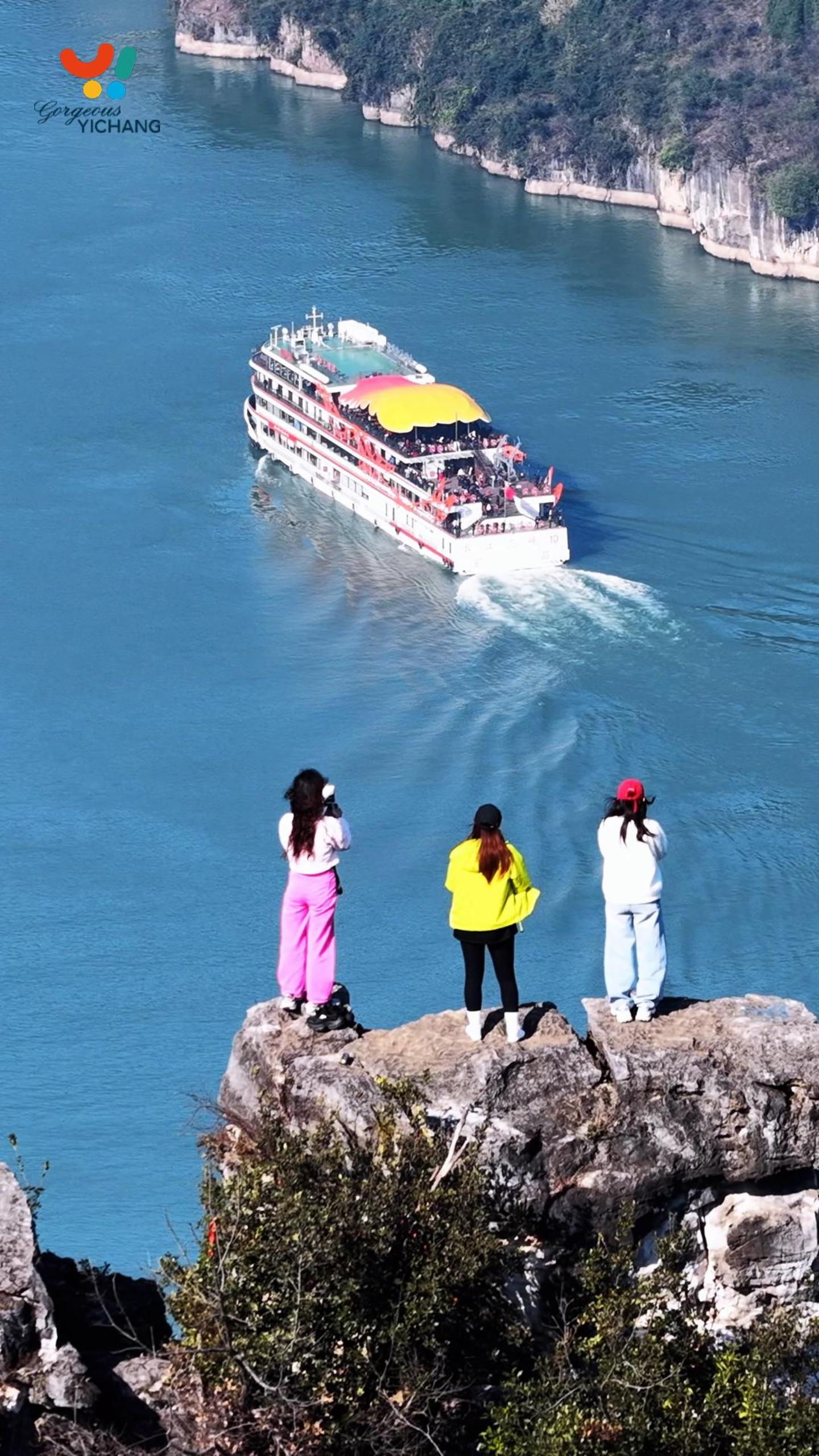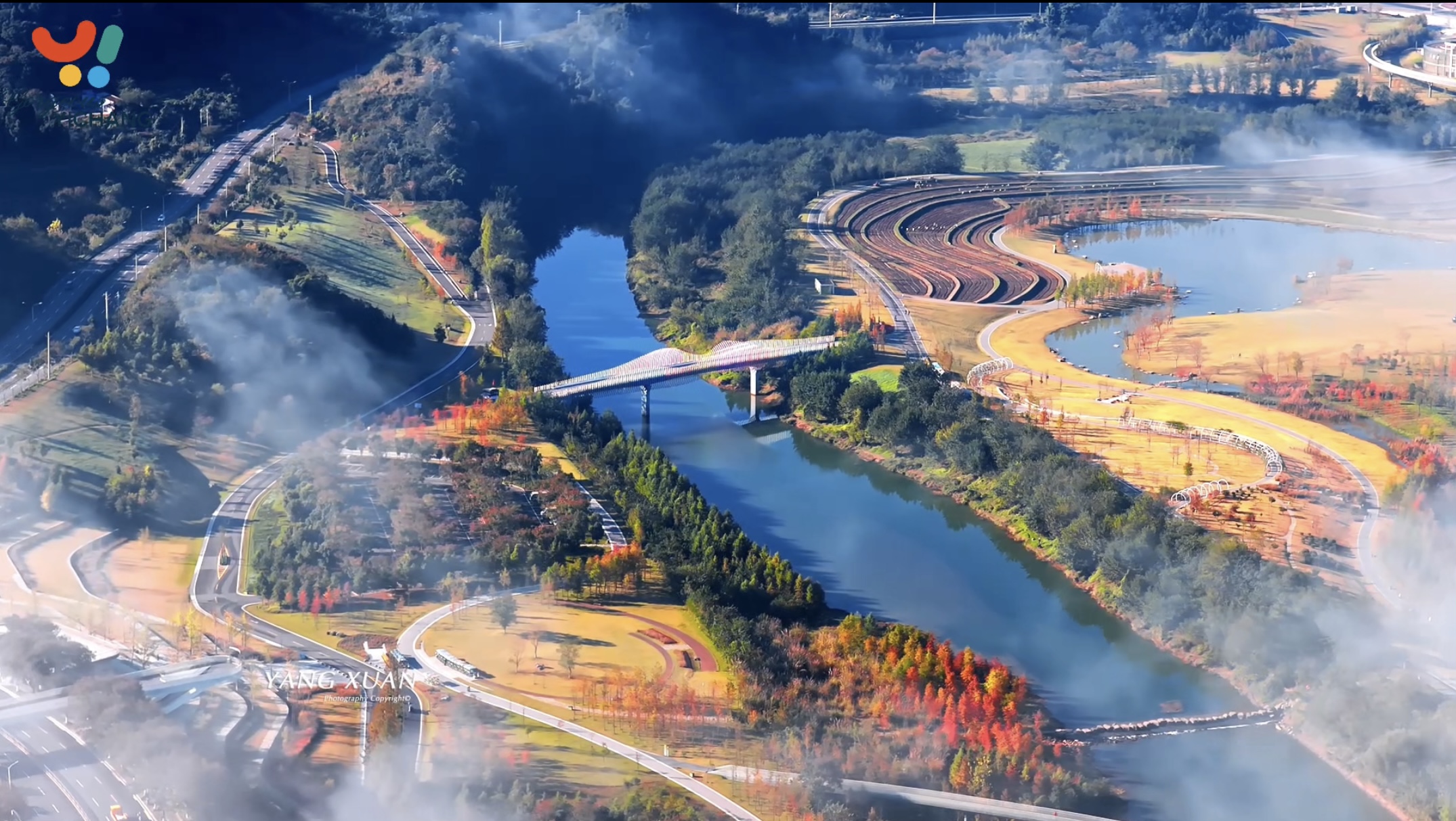Efficient circular aquaculture increases sturgeon production in Yidu
2024-04-30 15:04:00
By Chen Si, Yichang International Communication Studio
Efficient circular aquaculture has more than tripled the sturgeon production in Yidu compared to the past.
In the Qingjiang Sturgeon Valley in China, there are over 700 grid-like sturgeon breeding pools in an indoor aquaculture workshop. This breeding base now houses more than 1.2 million sturgeons of various species, many weighing over 100 kilograms. The annual caviar production capacity exceeds 100 tons, and the products are sought after by 10 different countries and regions.
As a result, the company has become a global leader in the caviar industry, making Yidu the "World's Capital of Sturgeons." Yidu is part of Yichang City, Hubei province.

"Compared with traditional open-air sturgeon pools, these indoor pools can save 99 percent of land and 95 percent of water on the same scale," said Ji Jianyi, the director of Hubei Qingjiang Sturgeon Valley Special Fisheries Co., Ltd. The sturgeon yield per cubic meter of sturgeon breeding pools has reached 50 kilograms, more than double the previous level.
The water in these pools comes from the Qing River and undergoes three cycles of recycling during its time in the Sturgeon Valley. After treatment, the discharged water meets the Class II water quality standard.
Water quality is crucial in facility-based fisheries. "In the past, the high breeding density meant that as many sturgeon ate and excrete in a limited amount of water, the water would soon become muddy," Ji said.
To address this, the Sturgeon Valley has constructed isolation pools and biological treatment pools with air pumps to accelerate water circulation and achieve efficient recirculation aquaculture.

Efficient circular aquaculture has more than tripled the sturgeon production in Yidu compared to the past.
In the Qingjiang Sturgeon Valley in China, there are over 700 grid-like sturgeon breeding pools in an indoor aquaculture workshop. This breeding base now houses more than 1.2 million sturgeons of various species, many weighing over 100 kilograms. The annual caviar production capacity exceeds 100 tons, and the products are sought after by 10 different countries and regions.
As a result, the company has become a global leader in the caviar industry, making Yidu the "World's Capital of Sturgeons." Yidu is part of Yichang City, Hubei province.

"Compared with traditional open-air sturgeon pools, these indoor pools can save 99 percent of land and 95 percent of water on the same scale," said Ji Jianyi, the director of Hubei Qingjiang Sturgeon Valley Special Fisheries Co., Ltd. The sturgeon yield per cubic meter of sturgeon breeding pools has reached 50 kilograms, more than double the previous level.
The water in these pools comes from the Qing River and undergoes three cycles of recycling during its time in the Sturgeon Valley. After treatment, the discharged water meets the Class II water quality standard.
Water quality is crucial in facility-based fisheries. "In the past, the high breeding density meant that as many sturgeon ate and excrete in a limited amount of water, the water would soon become muddy," Ji said.
To address this, the Sturgeon Valley has constructed isolation pools and biological treatment pools with air pumps to accelerate water circulation and achieve efficient recirculation aquaculture.

Photo by Ma Min
This ecological aquaculture system constantly replenishes oxygen for the sturgeon pools and efficiently collects and removes fish waste from the water system.
Technicians have also added a thin layer of pellicle in the pool to absorb some pollutants, purify the water, and increase the oxygen content.
At the factory, all water in the landscape pools is treated wastewater. "This waste water after treatment can meet the breeding standards, can continue to cycle for breeding," Ji said.






